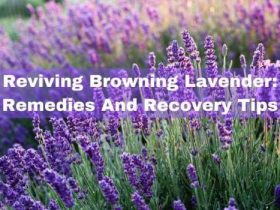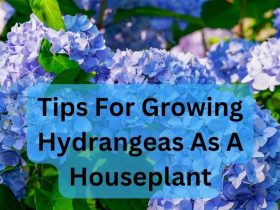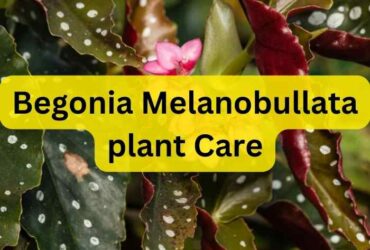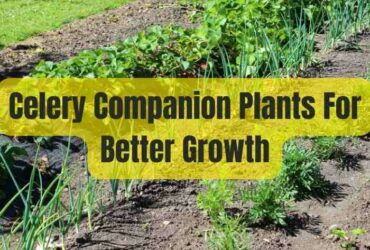Note: The post may contain a few affiliate links. As an Amazon Associate I earn from qualifying purchases.
Most of us do not think twice when using compost for outdoor plants. But can you put compost in house plants as well? The straightforward answer is yes!
It comprises organic materials such as plant leaves, kitchen scraps, and animal droppings. Compost in containers improves the quality of your soil by adding micronutrients like potassium, nitrogen, and phosphorous. It ensures that the soil holds water longer, so the nutrients get dissolved.
Let’s discuss how you can put compost in house plants in detail!
Why do Indoor plants need compost?

Outdoor plants experience natural fertilization. The decaying organic matter, falling leaves, and decomposing bugs all play their part in keeping the soil rich in nutrients.
You might be using premium quality compost for your indoor pots because it contains nutrients that are beneficial for the healthy growth of the plants. But for how long? It will eventually run out of essentials your indoor plants need to grow. It cannot provide nutrients for their whole lives as they are contained in pots.
So, when soil becomes depleted of nutrients, you must find a way to compensate for your plants’ health. Using compost for house plants is the organic way to make your plants thrive. Are you wondering how to get started? Stick to it and read the next section! In case you are unclear about the best compost for the vegetable garden, we have written a detailed article only about kitchen and gardening.
Indoor Plant Compost-How to get started
If you’ve already been using compost for your outdoor garden plants, you’ll also be familiar with adding compost in containers indoors. If not, read further to know!
First, as you gather piles outdoors, you can keep compost piles indoors because they attract pests. You can easily deal with its smell by choosing the right bin for it.
Most people use worm composters. Worms and soil microbes form decayed organic materials, making this compost more beneficial. It has more capacity to retain water than other compost types. But this is not the only compost for planters. If you are reluctant to keep worms inside your house, you can go for aerobic composting that uses already present microbes to turn the waste into compost.
Remember adding too much compost to indoor planters can cause harm, eventually leading the plant to die. But too little will not work and not affect them. So how much exactly should you add compost in containers? Roughly, it should minimum be an inch of the container. But you can vary the quantity according to the pot size and the plant.
Additionally, it’s unnecessary to disturb the roots to mix compost in the soil. You can add it by mixing it with the upper layer of the planter’s soil.
Compost pile Indoors
Whether you go for the worm composting or the aerobic one, you need two things to create a pile indoors.
Compost Bin
To start making compost for your indoor plants, you can use a container with a lid to store your food leftovers and scraps. It can be a garbage bin or the compost bin that you can buy from any gardening store near you.
Choosing an appropriately sized compost bin is essential. If you have a large family and have many scraps daily to put in, you should go for an 18 or even 24-gallon compost bin. Otherwise, up to 10 gallons is also enough.
Besides plastic containers, you can also choose wooden boxes or crates as composting bins. Countertop composting bins are another practical option, as well as decorative pieces.
Compost Material
Compost material includes brown material made up of newspapers, dried plant material including fallen leaves and branches, cardboard, hay, straw, tea bags, wood shavings, kitchen scraps, food leftovers, grass trimmings, and animal droppings.
Tips for getting the best results from your indoor piles
- Use a compost bin with holes on the sides and upper and lower sides so that air can get through and your compost becomes oxygen-rich.
- Use a tray to put your compost bin on. It will save your floor or furniture from seeping water. Clean the tray now and then.
- If you’ve decided to make worm compost, red worms are recommended. You can buy them from any nearby gardening outlet.
Benefits of compost for Indoor plants
Now let’s discuss a few of the many benefits of using compost for pots.
You will notice that using compost in containers will help your plants become greener, straight, and healthier.
You won’t need to water your plants as frequently as you would be doing before adding compost to them. Compost will keep your plant safe from dehydration.
No need to add chemical fertilizer after adding compost to the soil. Also, chemical fertilizers are tricky to add; if added in excess can kill your plant. So, you won’t have to deal with that anyway.
Compost is organic and environmentally friendly, removing a lot of landfill waste.
Using organic compost in containers is the same as reducing, reusing, and recycling the material; that’s definitely the goal of every gardener!
Indoor compost Concerns
Besides preparing your compost for house plants, you might have concerns with the ‘smell.’ But managing your compost bin and material can help you cope easily. Also, there will not be any smell when you add compost to containers.
Let’s discuss your concerns in detail a little:
Avoiding compost smell
There can be many reasons behind the unwanted compost smell. A few of them are:
- No aeration. You should use a compost bin with holes so that air can pass through. You won’t observe any smell when there’s enough oxygen in the compost.
- If you are adding too many only greens to your bin, it can also make the compost smelly. So, try to add all the leftovers to keep it in balance.
- Adding the wrong compost material can also lead to smelly compost. You should not add materials to your compost, including pet waste, dairy products, bones from meat and fish, walnuts, coal ash, coffee pods, or baked goods.
How do you manage bugs and pests?
Kitchen scraps consist of many nitrogen-based nutrients that are good for your compost. But they can become smelly and attract bugs and pests. One way to avoid them is to bury deep the kitchen leftovers and then add brown material to the superficial layer. Also, turn the composting material every week to avoid such issues.
Tip: You can chop the material into smaller pieces before adding it to the composting material. It will not only save space but also decompose faster.
Final Words
The compost consists of organic household waste that can be used as compost in containers for indoor plants. It eliminates the need for chemical fertilizer you would already use for your house plants. It can easily be prepared in the compost bins at home. It not only makes your plants grow more but also greener and stand straight. You can avoid smell and bugs by keeping it oxygen-rich. Lastly, you don’t need any outside space to prepare this compost. So, don’t forget to give feedback in the comments section below!














Leave a Reply